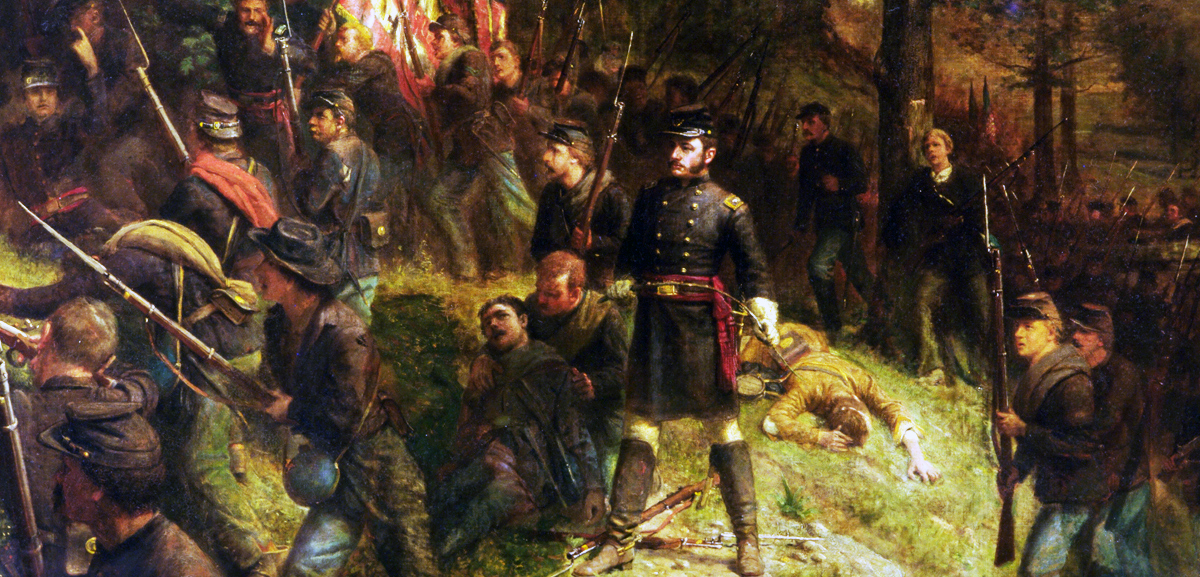In the late summer of 1862, Robert E. Lee led the Army of Northern Virginia in an invasion of the North for the first time in the war, threatening Pennsylvania. The collision of the opposing armies was near the Maryland town of Sharpsburg, but is known as the Battle of Antietam. This battle scene, now believed to have a portion missing, depicts Colonel Robert Brown Potter as the central figure. Potter had just been appointed as colonel of his regiment, the 51st New York Volunteer Infantry, when he was called upon to push his regiment, along with the co-incidentally numbered 51st Pennsylvania Volunteer Infantry, across a stone bridge over Antietam Creek, and attack the Confederate right flank. The advance of Union forces under General Ambrose Burnside had been delayed by Confederates on a low ridge overlooking the bridge (now known popularly as “Burnside’s Bridge”) and the day was waning. The assault of these troops of the Union left flank would be the final one of the battle and could decisively determine the battle’s outcome and potentially destroy Robert E. Lee’s forces.
Potter and his two regiments succeeded in forcing their way through the hail of bullets and pushed the Confederates off the hillside; a scene which is depicted in this painting. It is believed that originally the stone bridge was visible in the distance on the right hand side of the painting. Despite the successful assault at the bridge Union victory was stymied by the last minute arrival of fresh Confederate troops who stalled the Federal advance. Although the battle ended in a bloody stalemate as the most Americans ever died on that single day, but as Lee was forced to retire from the field and return to the South it was considered a technical Northern victory.
Although the artist who painted this work was not at the scene, he was himself a veteran of the war. Julian A. Scott has enlisted in the Third Vermont Volunteer Infantry as a drummer. He served until May of 1863, when he was discharged because of disability. Although a drummer and only fifteen at the time of his enlistment, Scott served in battle and was awarded the Medal of Honor for bringing wounded soldiers to safety under fire at the battle of Lee’s Mills, Virginia in April of 1862. He is one of the youngest men to have ever been awarded the Medal of Honor. After the war Scott studied at the National Academy of Design, mentored by the noted artist Emanuel Leutze, and became a prominent American artist whose works include many Civil War scenes and portraits.
Colonel Potter continued to serve after being wounded at Antietam, and was promoted to brigadier general in March of 1863. Wounded again near Petersburg, Virginia, in July of 1864, Potter missed the closing campaigns of the war. At the end of the war he was promoted to the rank of major general, and went into the profession of law as a civilian.





